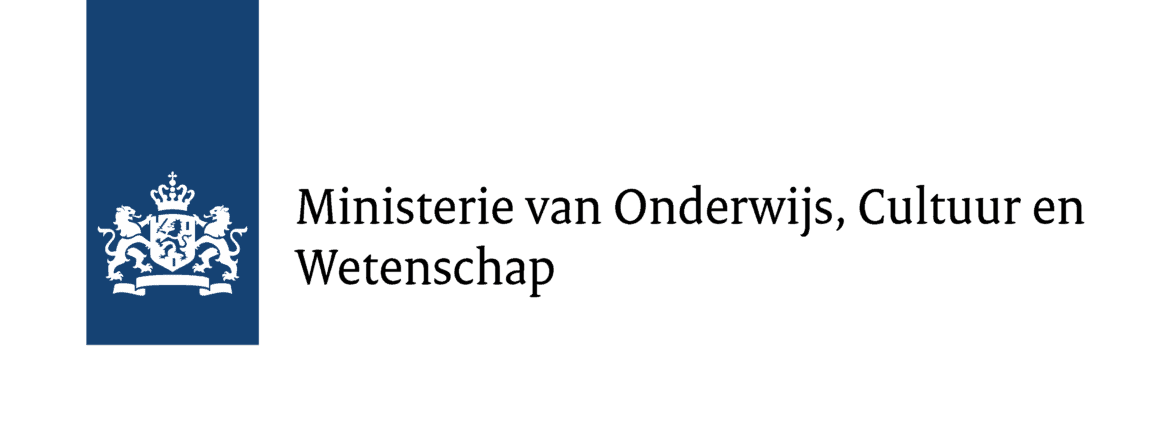NEW WAVE*
*Future Voices in Art
*Future Voices in Art
From 22 June to 3 November 2024, DAR Cultural Agency and Stedelijk Museum Schiedam present the international group exhibition NEW WAVE. Future Voices in Art. The exhibition showcases six new room-filling installations by The Nest (Nairobi, Kenya), Nifemi Marcus Bello (Lagos, Nigeria) and Rotterdam-based artists Marga Weimans, Ameneh Solati, Yuro Moniz and Elejandro Martinez.These artists represent an international movement in art that adresses global issues through collective experiences and local ecosystems. NEW WAVE breaks with the concept of ‘low’ and ‘high’ art and centers everyday life.
Context and Collectivity
The work of these artists arises from a rooted relation with local ecosystems and touches global cultures and issues. As living between countries, continents and different cultures is intrinsic to who they are, how they move and work, their practice is not limited by traditional rules and conventions of the mainly Western dominated art and design world. The exhibition, curated by Zineb Seghrouchni, founder of DAR Cultural Agency, is inspired by the concept of genuine internationality and the power of creating new knowledge together.
NEW WAVE
In art, music, fashion or politics, a ‘new wave’ stands for a movement that deliberately breaks out from standardised ideas, methods or values. In this exhibition, NEW WAVE signifies a movement that amplifies perspectives, stories and practices that move beyond the understanding of what is perceived as authorised contemporary art and design today. The six installations by The Nest, Marga Weimans, Nifemi Marcus Bello, Ameneh Solati, Yuro Moniz and Elejandro Martinez embody this NEW WAVE and invite visitors to experience and immerse themselves in it.

© Marga Weimans, The 4C Body, 2024, photo: Ossip van Duivenbode
The artists
Fashion designer Marga Weimans presents the spatial installation The 4c Body. Driven by the question ‘What is Black identity?’, Weimans’ work redefines the boundaries of fashion and beauty. Weimans works across a range of disciplines and materials – couture, architecture, textile and digital technology are interweaved with each other. Her installation revolves around the poetic and familial meanings of her own hair type, 4c. With an emphasis on memories related to taking care of Black hair. The artist drew her inspiration from the Afro locks that accumulate on the spiral staircase in her house every day, which spawned the idea for a multi-media installation that depicts a fictional parallel reality of hair care in a family setting. The family featured in the installation is composed of Weiman’s own relatives and AI-generated cyborgs.
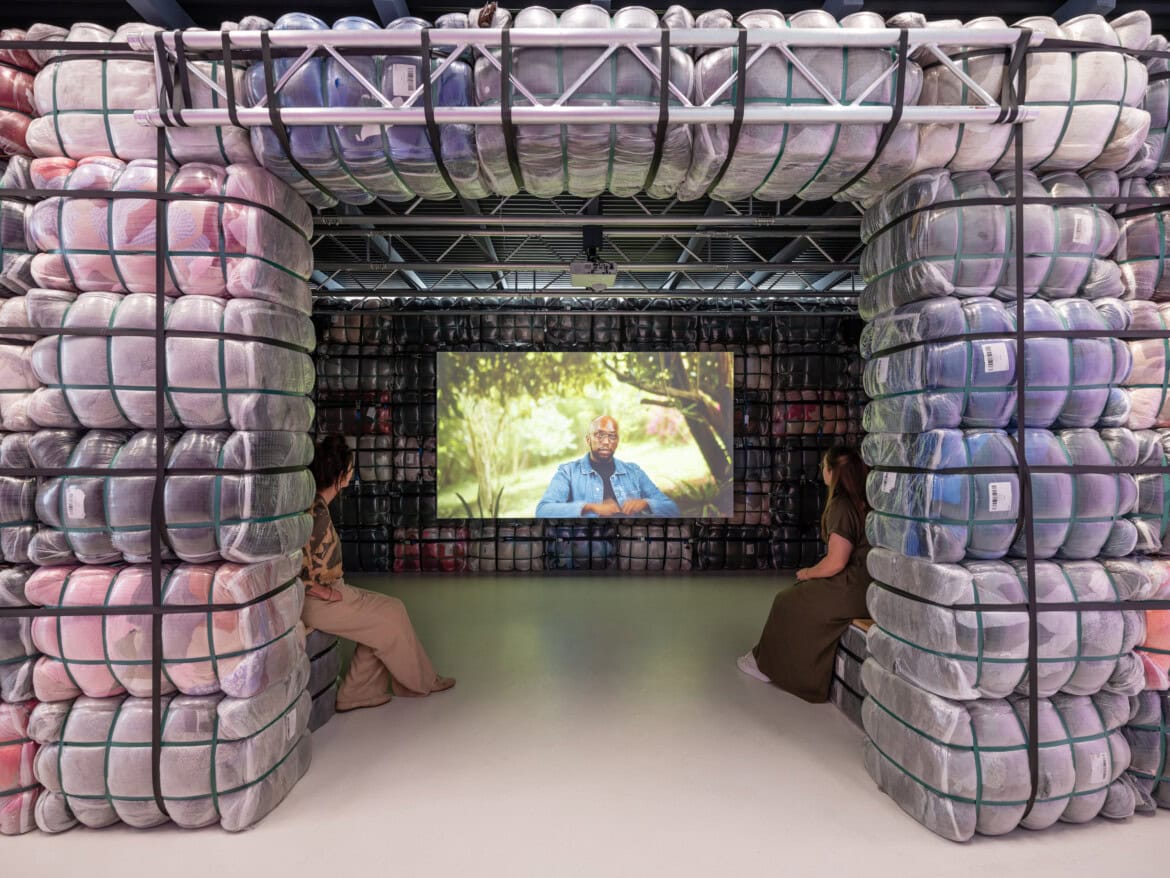
© The Nest Collective, Return to Sender, 2024, photo: Ossip van Duivenbode
The Nest is a collective of artists, filmmakers, writers and architects from Niairobi, Kenya. In NEW WAVE they present a site specific version of their work Return to Sender, featuring a structure built from bales of discarded clothes, known in Kenya as mitumbu. Previously shown at Documenta 15 in Kassel, this work represents the proliferation of waste among which the world’s population now lives. The structure and the film screened inside it invites the viewer to reflect on the impact of the extreme levels of clothing consumption. This excessive consumption results in discarded clothing being transported from Europe to Africa and Asia where it is dumped, and vast wastelands are created. Now The Nest symbolically sends the bales of textiles back to where they came from; in this case, Schiedam.

© Nifemi Marcus-Bello
Nigerian Nifemi Marcus-Bello describes Africa as a designer’s utopia. One of his main inspirations is the selfmade objects he sees on the streets of West African cities. He sees these products as a form of ‘unauthorised design’. In his own design practice, he combines traditional craftsmanship with the latest technology to create new designs and artworks inspired by the local context. The installation he created for NEW WAVE is contextualised through the ties that bind West-Africa, Surinam and The Netherlands. Nifemi created a new version of his continuously evolving pavilion design, by collaborating with textile designer Frank Remak – known for his graphic symbolism rooted in Surinamese storytelling. The pavilion is surrounded by moving images from Nifemi’s research Africa – A Designer’s Utopia, a study of the Kwali – a mobile kiosk – created by street vendors in his hometown of Lagos.
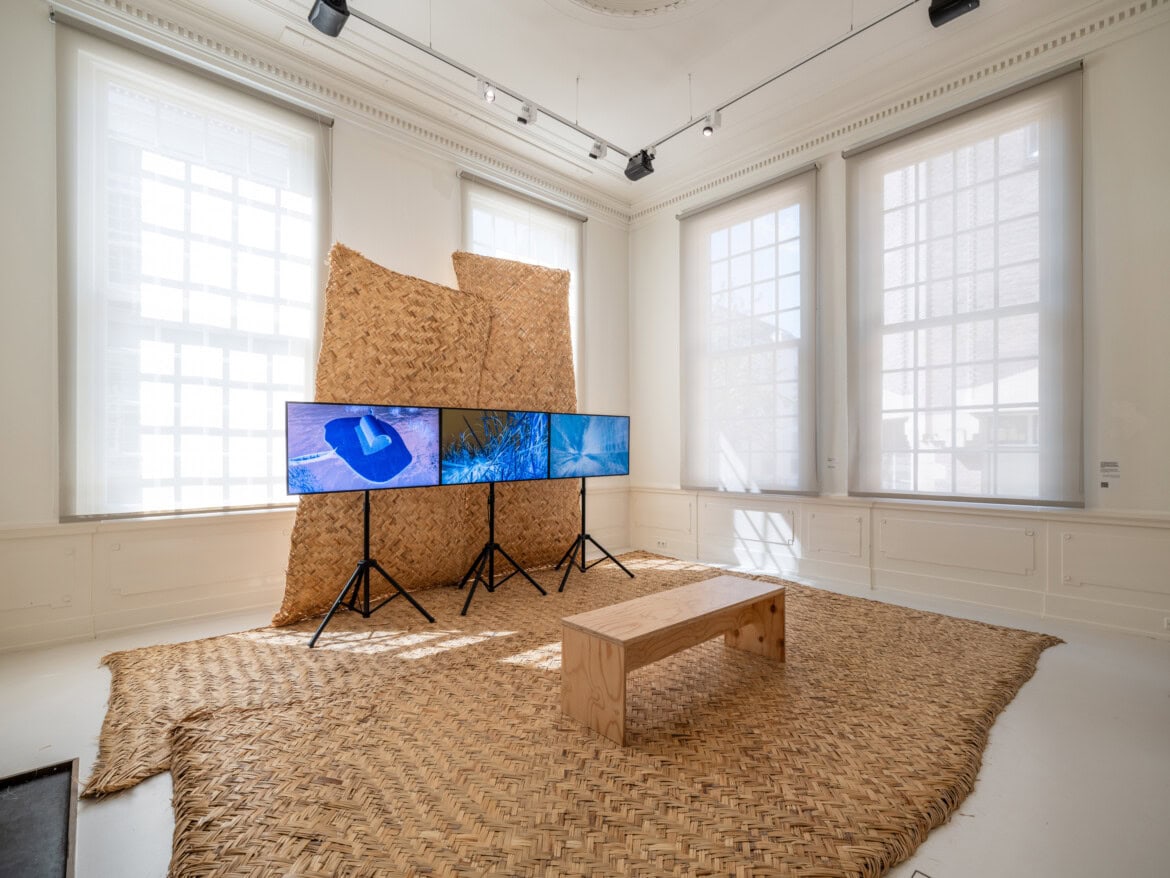
© Ameneh Solati, Water, Reed and Other Defensive Strategies, 2024, photo: Ossip van Duivenbode
In the multimedia installation Mesopotamian Marshes, Iranian-Iraqi Ameneh Solati shares years of ongoing research into the Ahwar, the marshes in southern Iraq in what was once known as Mesopotamia. Decades-long environmental injustice and oppression has caused an on-going ecological disaster impacting both the natural environment and the Ahwari people. Solati delved into how a specialist knowledge of the natural environment and complex skills have helped create design strategies to maintain their independence and autonomy.
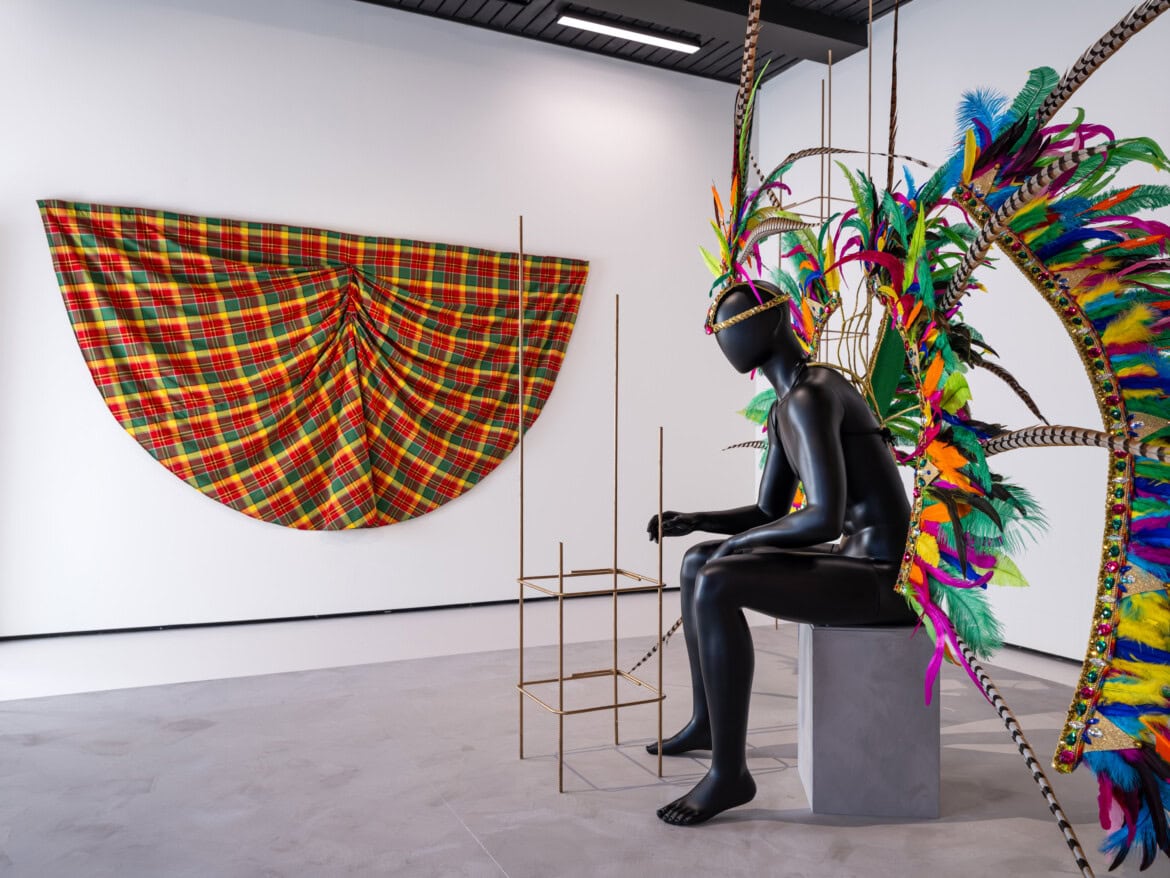
© Elejandro Martinez, Void Home, 2024, photo: Ossip van Duivenbode
Elejandro Martinez is an art director, founder of the TENS salon, choreographer and dancer. He is a prominent figure in Dutch ballroom culture, where he is known as Elly Vineyard, the father of House of Vineyard. In his multi-facetted practice, the absence of home is a recurring theme. Often forced, queer Caribbeans leave their nest to create new lives, homes and families. While succeeding in doing so, the question remains whether it is possible to actually recreate this original and fundamental feeling of being at home. Elegandro draws parallels to the storms and hurricanes on the island of St Maarten, where he grew up, as a metaphor for this process. The work he created for NEW WAVE reflects the absence of home through a large sculpture of concrete foundations and construction steel plated in gold. Amidst stands a Reveler, a leading figure in Caribbean carnival in a costume made by Martinez, referring to experiencing joy, pride and presence. The question remains though, can you ever bridge that void of truly feeling at home.
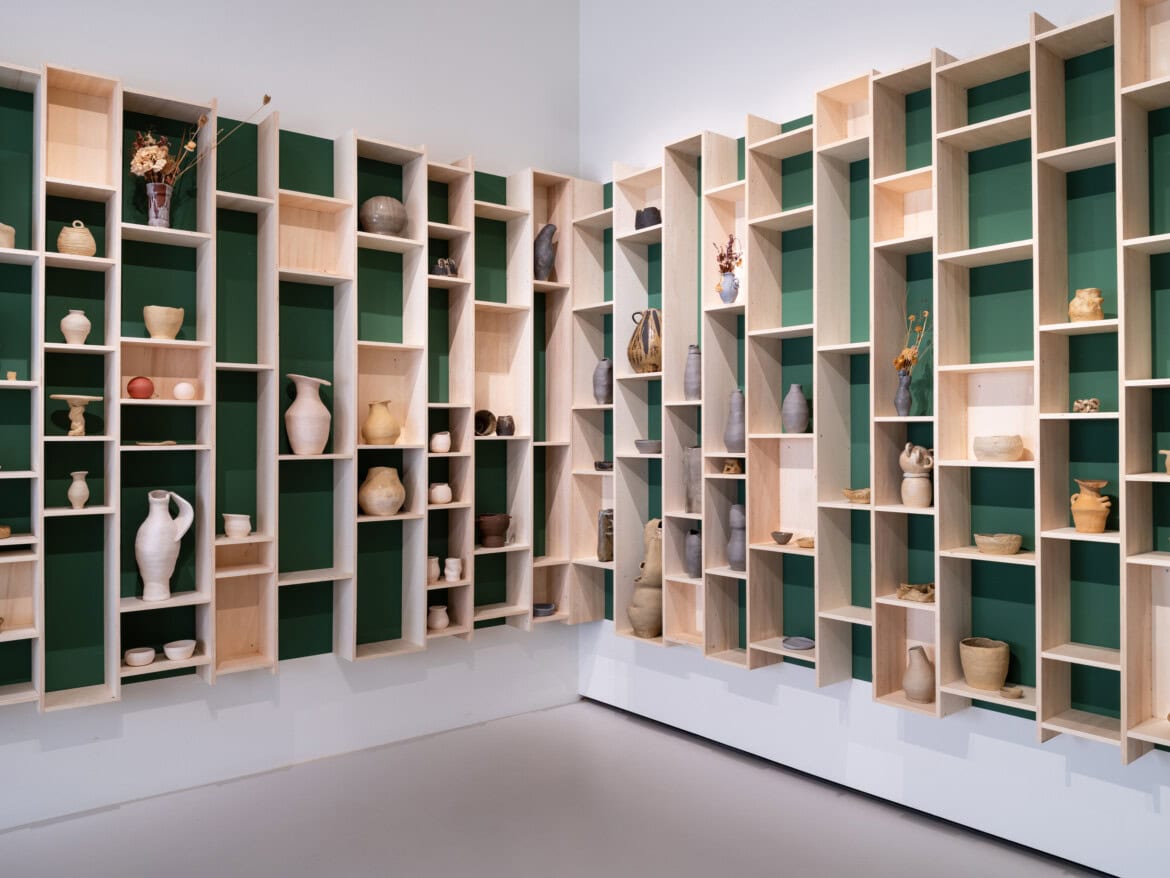
© Yuro Moniz, Grandmothers, 2024, photo: Ossip van Duivenbode
As one of the world’s oldest art forms, ceramics have been a way of telling cultures’ stories for centuries. In her ceramic work, Yuro Moniz freely draws inspiration from artisanal traditions from around the world. In the run-up to the exhibition, Moniz brings communities close to her heart together to create clay objects that will be added to the installation. The installation forms a meditative space formed by walls build out of 365 clay objects, each telling a story of community, tradition and identity.
DAR x Stedelijk Museum Schiedam
For the NEW WAVE exhibition, the Stedelijk Museum Schiedam and DAR Cultural Agency joined forces. This art platform, founded in 2022 by Zineb Seghrouchni, is committed to amplifying a new norm. This new norm already exists, in the fringes of society, neighborhoods and disciplines and emerges outside of the traditional institutions. DAR brings new streams and dreams to art through thoughtful curation, cultural programming and representing artistic talent in the field of art, design and architecture, providing a home for creative growth.
With strong roots in architecture and design, Zineb has a passion for building, both physically and metaphorically. Seghrouchni writes, curates, designs and researches urban phenomena and spaces in relation to art and culture, from Milan to Dakar and beyond. Through DAR Cultural Agency, she creates a platform and opportunities for meaningfull collaborations between artists, museums, brands and communities.
This exhibition is supported by the Ministry of Education, Culture & Science.
